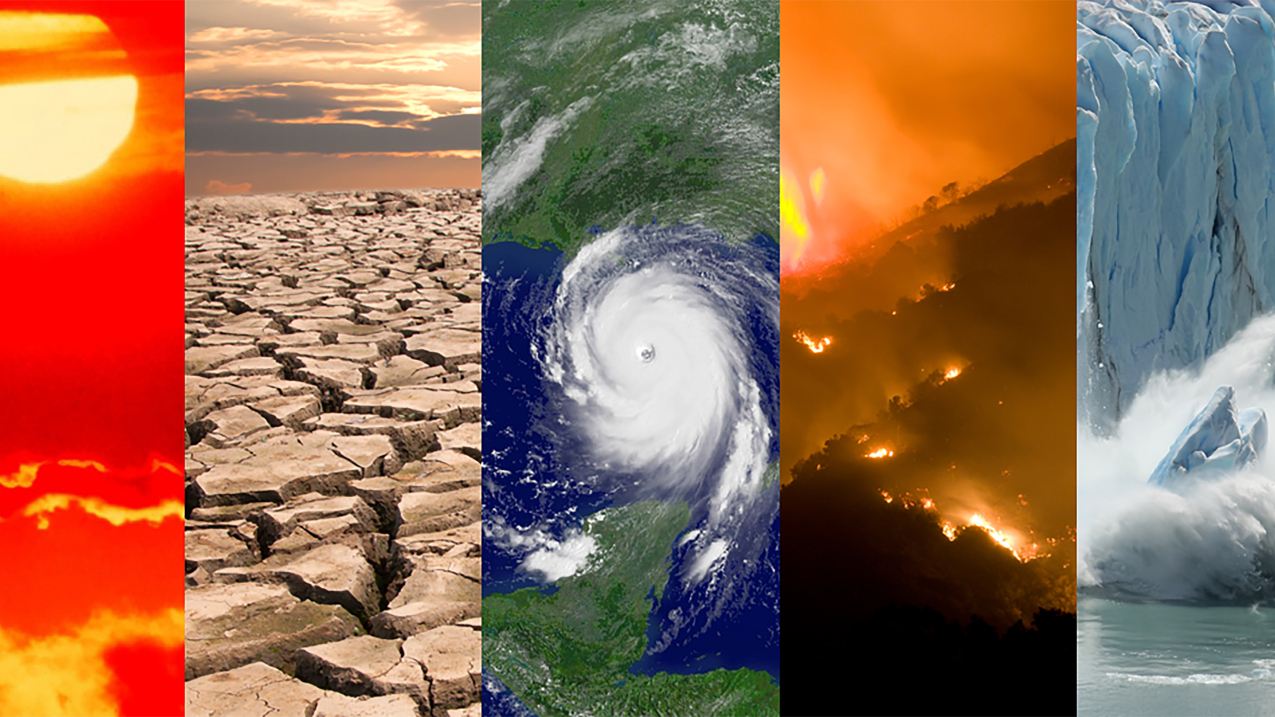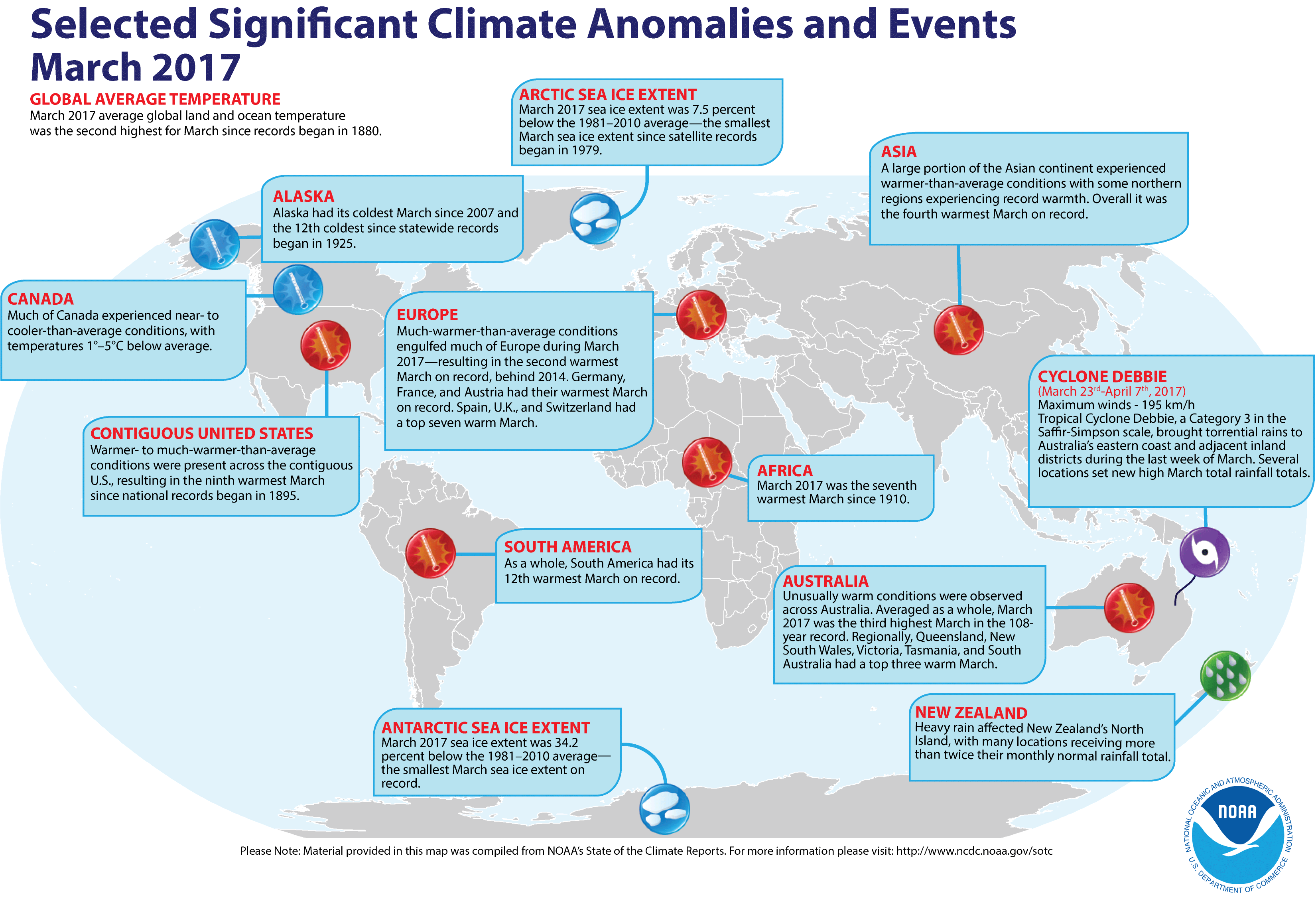Arctic and Antarctic sea ice extents remain record-low

A collage of typical climate and weather-related events: heatwaves, drought, hurricanes, wildfires and changes in sea ice coverage. (Image credit: NOAA)
Hot on the heels of the second warmest winter in the 138-year record, March continued the global warm trend that could last well into this year — especially with increasing chances for the arrival of El Nino by late summer or fall.
Climate by the numbers
March
The March 2017 average global temperature was 1.89 degrees F above the 20th-century average of 54.9 degrees, according to the analysis by scientists from NOAA’s National Centers for Environmental Information. This was the second highest for March in the 1880-2017 record, behind last year by 0.32 degrees. This also marks the first time the monthly temperature departure from average surpassed 1.8 degrees F in the absence of an El Nino effect in the tropical Pacific Ocean.
Year to date | January through March 2017
The year-to-date average temperature was 1.75 degrees F above the 20th-century average of 54.1 degrees. This was the second-highest first quarter of the year on record, behind 2016 by 0.32 degrees F.

Other notable climate events and facts around the world last month included:
More record-low sea ice extent at the poles
-
The average Arctic sea ice extent was 7.5 percent below the 1981-2010 average for March, and the average Antarctic sea ice extent was 34.2 percent below the 1981-2010 average. For both regions, this was the smallest March sea ice extent since the satellite record began in 1979.
Near-average snow cover in the Northern Hemisphere
-
The Northern Hemisphere snow cover extent was 20,000 square miles below the 1981-2010 average, the 24th smallest value in the 51-year period of record. North America had its 20th smallest, and Eurasia was near the middle of the record.
Warmer-than-average lands and oceans
-
The globally averaged sea surface temperature was the second highest March on record, 1.28 degree F above average.
-
The globally averaged land-surface temperature for March was the second highest on record for that month, 3.56 degrees F above average.
Global warmth varied by continent
-
Europe and Oceania had their 2nd warmest March on record; Asia, its 4th; Africa, its 7th; South America, its 12th; and North America, its 30th.
You can find NOAA’s report and download related maps and images by visiting the NCEI website.
Media contacts
John Leslie, 301-713-7331
Brady Phillips, 202-407-1298



